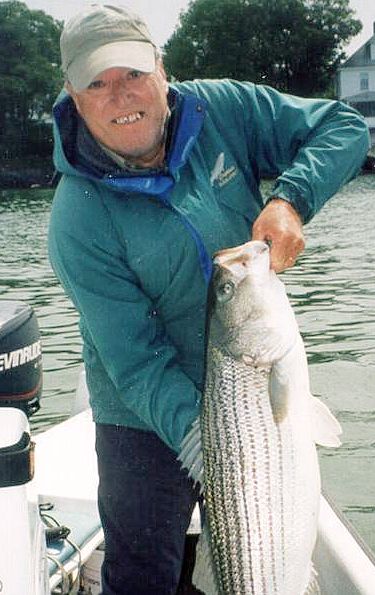Memories!
That’s what a guide creates. Good or bad.
There are weather conditions and
fish and game availability that a guide can’t control. But, they can control
many other things like a clean boat, being on time, being honest,
providing
functional equipment, knowledge of the area and landscape, empathy, good story
telling, and a willingness to help the not so talented sports to learn about
the quest at hand.
On any given day a guide meets a
sport who is very talented at the quest and on other days is presented with
rank beginners. It is the guide’s job to provide a day of activity which is
memorable. It doesn’t necessarily mean catching the most or biggest fish or
shooting the biggest deer or a limit of winged challenges.
I had a man and his young son
come fishing for striped bass a few years back. The father made it very clear
that the day was all for his son. The little guy could hardly cast a small spin
rod. I helped him all trip long. Fishing was a little on the slow side, but he
did manage to catch a few with his limited talent. During the lull in fishing
he got a little cranky. So I made a quick decision to change the trip plan to a
nature quest, suggesting he might like to see some seals. Oh yes he would. So
we did. And then I suggested we just might find a bald eagle if we got lucky.
We did. Would he like to see a family of baby ducks? Yes he would. We did.
. I said it might be several
weeks before he got his pictures. He was disappointed because he wanted to tell
his mom how big the fish were.
The biggest fish he caught was
about 14 inches. So I asked him to stretch his arm out straight to the side. I
measured from his arm pit down his arm to 14 inches. There, I told him he could
show his mother the size. That measure went well beyond his elbow.
Last year the same father and
son team came fishing again after several years had past. The little guy was
now much bigger.
During the day of fishing the
now young man said he remembered that big fish he caught on the previous trip.
I asked how big. Raising his arm out straight and pointing from his arm pit to
the original point on his arm where the fish would have stretched to, this big.
. Well, that 14 inch fish memory had grown to a 30 inch fish! We all laughed
and his dad said that was a really big fish, ha? Memory created.
Another time I had guided this sport over
several years. This day was a cold, mid July day with winds howling out of the
southeast. I offered a trip cancellation because of the conditions, but he said
no, he wanted to fish.
He called this winter after many
years of not visiting Maine Florida Maine
During our talk he mentioned the
big fish! Oh the memory on that miserable weather day. His wife laughed on the
other phone saying, “ya, that photo of the fish has been in our wall ever
since”.
We had been catching medium
sized busting fish all morning and getting beat up pretty good by the rough
water conditions. It was suggested that I might have honey hole in a lee that
might hold a larger fish.
I pulled into a spot and
anchored up, something I rarely do. Quite quickly my sport was onto a big fish
using a very small fly. His experience brought the fish in quickly. It was
difficult to get the monster in the boat. No question, it was over 50 pounds
taken with a 12 pound class leader and a fly I called the Every Ready. The fish
was quickly released. Sport shipped his rod in the rack, reached into his vest
pocket to haul out his traditional end of the day cigar, prepared it, lit it
and took one drag. Then he said, “It’s been a great day Doug, let’s call it.”
We both agreed that without
verification, the fish was likely a tippet class world record. Look at the
photo, I think you would agree. Memory created!




